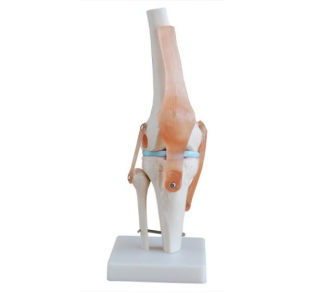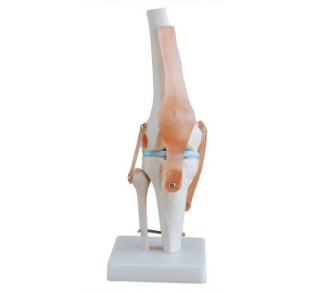As a medical teaching aid, knee joint model has a profound impact on medical education, clinical practice and patient education, and its application value is reflected in many aspects.

Firstly, knee joint model provides an intuitive and three-dimensional learning platform for medical students. In traditional anatomy teaching, students often rely on two-dimensional images in books or oral descriptions from teachers to understand the complex structure of the knee joint. However, this way of learning often fails to form a deep sense of space and dynamic understanding. The knee joint model can truly reproduce the bones, ligaments, muscles and joint capsules of the knee joint, so that students can touch, observe and operate with their own hands, so as to more intuitively understand the anatomical characteristics and functional principles of the knee joint. This intuitive way of learning helps to deepen students' memory and improve learning results.
Secondly, the application value of knee joint model in clinical practice can not be ignored. For clinicians, knee models can serve as an important tool for surgical planning and rehearsal. Doctors can simulate the surgical process on the model and evaluate the feasibility and risks of the surgical plan, so that they can be more relaxed in the actual operation. In addition, the knee joint model can also be used for teaching ward rounds and case discussions, helping doctors to better communicate and collaborate on treatment plans. Through the display and operation of the model, doctors can express their ideas and opinions more clearly, and promote understanding and consensus among the team.
Finally, knee models also play an important role in patient education. For many patients with knee diseases, they often lack adequate understanding of their condition and treatment options. The knee joint model can present complex medical knowledge to patients in an intuitive and understandable way, helping them better understand their condition and treatment process. Through the display and interpretation of the model, doctors can popularize the anatomical knowledge, pathological changes and treatment principles of the knee joint to patients, and enhance patients' treatment confidence and compliance. At the same time, patients can also use the model for self-assessment and rehabilitation training to promote the rehabilitation and recovery of the disease.
To sum up, knee joint model as a medical teaching aid has a wide range of application value. It not only provides an intuitive and three-dimensional learning platform for medical students, but also provides clinicians with an important tool for surgical planning and rehearsal, and also provides strong support for patient education. With the continuous development and innovation of medical technology, the application scope and effect of knee joint model will continue to expand and improve.

